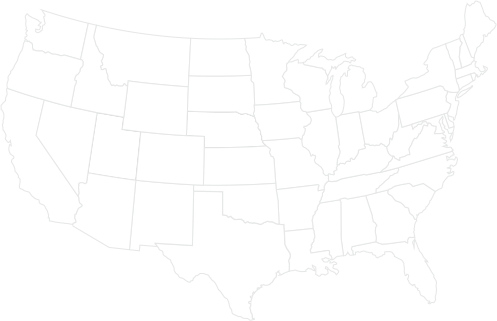U.S. Cotton Production Sees An Increase In Pounds Per Harvested Acre
• Posted in News Releases
The 2022 upland cotton crop produces the highest yield per acre on record.
CARY, N.C. (Feb. 14, 2023) – Dairy and beef cattle producers can expect to see a decrease in whole cottonseed supply this crop year. According to the U.S. Department of Agriculture’s January World Agricultural Supply and Demand Estimates (WASDE), cotton production is estimated at 14.7 million bales, a 16% decrease from the 2021 crop year.
Cotton prices were well above one-dollar last spring, which motivated U.S. growers to plant two and a half million additional acres for 2022/23 than for the 2021/22 crop year. However, adverse weather conditions allowed the fewest harvested acres since 2013. Despite the challenges to production, the national fiber yield per harvested acre is expected to set a record of 947 pounds.
“In the Southeast and Delta regions, producers will see increased availability of whole cottonseed to incorporate into their cattle rations,” states Larry Johnson, gin consultant and owner of Tactical Risk advisors. “However, producers in the Southwest and West may need to contract the feed ingredient from other regions due to weather challenges impacting cotton harvests. The Cottonseed Marketplace from Cotton Incorporated is a unique tool than can help these producers contract from a reliable whole cottonseed supplier.”
Cotton Incorporated recently launched an extensively updated list of suppliers on the Cottonseed Marketplace. The tool is an interactive map used to connect buyers and sellers of whole cottonseed in the United States. Each red dot indicates cottonseed merchants within a state and opens a list of cottonseed supplier companies. This list gives producers the flexibility of checking whole cottonseed suppliers in their state or surrounding states.
“The global cotton market has been on a roller coaster over the past year, with forces from both the demand and the supply sides pushing and pulling on the market,” says Jon Devine, senior economist at Cotton Incorporated. “The drought in West Texas led to record abandonment rates in the state. However, those losses were mitigated by record national yields per harvested acre for upland cotton.”
“The market continues to face uncertainty as it looks ahead to 2023. Planted acreage will be determined by how producers balance input costs and competing crop prices,” he adds. “West Texas could use more precipitation, but weather patterns may be shifting away from La Nina conditions, which could allow for the drought to finally break.”
Whole cottonseed has a unique triple-nutrient composition containing protein, available fat and effective fiber.1 Whole cottonseed is commonly used in dairies rations across the U.S. to increase milk production and butterfat content in the milk when added to a lactating cow ration.2 Beef cattle producers can take advantage of the triple-nutrient composition of effective fiber, available fat and protein.3 Additionally, the feed ingredient is an excellent supplementation to poor quality grass hay for dry and lactating cows because it supplies energy and protein in a single feed ingredient.4
“Whole cottonseed’s value is measured by its effect on milk production and butterfat at individual dairy operations,” says Lee Van Kleeck, independent dairy nutritionist. “Producers should consult with their nutritionists about utilizing ration balancing software to find the relative costs and benefits of feeding whole cottonseed.”
An advantage to using whole cottonseed is its ability to reduce the number of feed ingredients in a cattle ration. Due to the nutrient composition of whole cottonseed, fewer feed ingredients are required to meet the fat, fiber and protein needs of cattle rations.
“Increased feed prices have led many cattle operations to re-evaluate their feed ingredient purchases, but whole cottonseed remains a unique feed ingredient for many beef or dairy cattle rations. I encourage producers to work with their local nutritionist to evaluate their feeding program’s potential with this triple-nutrient feed ingredient,” Van Kleeck adds.
With harvest wrapping up, producers and their nutritionists are keeping an eye on the market and availability of whole cottonseed to contract from merchants and suppliers in early 2023. To find a whole cottonseed merchant in your region, visit the Cottonseed Marketplace at wholecottonseed.com.
1 Kellogg, D.W., Pennington, J.A., Johnson, Z.B. and Panivivat, R. (2001). Survey of management practices used for the highest producing DHI herds in the United States. J. Dairy. Sci. Vol. 84, Supplement, E120– E127. doi:10.3168/-jds.S0022-0302(01)70206–8
2 DePeters, E. J., Taylor, S. J., Franke, A. A., Aguirre, A. (1985). Effects of feeding whole cottonseed on composition of milk. J. Dairy Sci. Vol. 68, No. 4, pp. 902. https://www.sciencedirect.com/science/article/pii/S0022030285809073
3 Warner, A. L., Beck, P. A., Foote, A. P., Pierce, K. N., Robison, C. A., Hubbell, D. S., & Wilson, B. K. (2020). Effects of utilizing cotton byproducts in a finishing diet on beef cattle performance, carcass traits, fecal characteristics, and plasma metabolites. J. Anim. Sci., 98(2). doi: 10.1093/jas/skaa038
4 Stewart, L. and Rossi, J. (2010). Using cotton byproducts in beef cattle diets. Bulletin 1311. The University of Georgia and Ft. Valley State University, the U.S. Department of Agriculture and counties of the state cooperating. http://cottonpickin.tamu.edu/General%20Production/Georgia%20Cotton%20Byproducts%20for%20Beef%20Cattle%20B%201311_2.pdf

